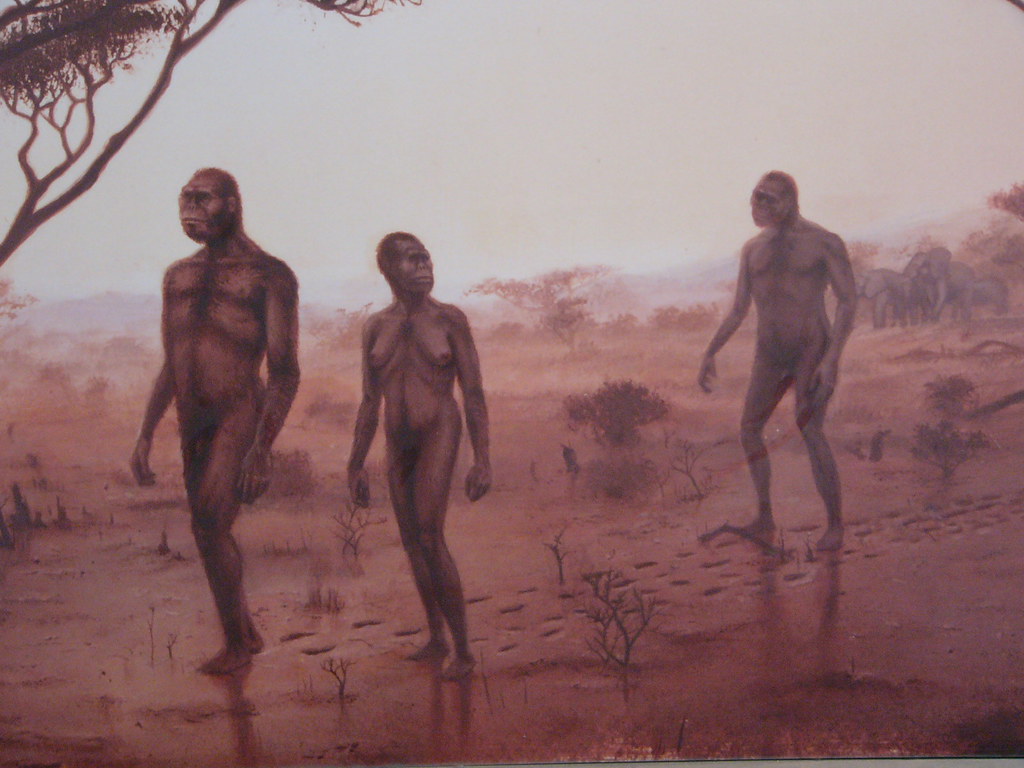
Ngorongoro — Tanzania has announced that its researchers have made a second important discovery of human evolution evidence dated 3.7 million years' old of hominin footprints within the Ngorongoro Conservation Area Authority (NCAA), north of Tanzania.
Tanzanian Minister of Natural Resources and Tourism, Prof. Jumanne Maghembe made the announcement at Laetoli, that the new discovery places Tanzania at the fore front in human origin research particularly in understanding the origin of upright posture and bipedal gait by providing the only concrete evidence that our ancestors were fully bipedal 3.7 million years ago.
Laetoli holds the record of the world-famous archaeological site where the first hominid footprints excavations were discovered by a team of scientists led by Dr. Mary Leakey in 1978. This geological site has over the years inspired scientists, researchers and geologists including tourists to witness first-hand the human evolution evidence found in Africa.
Prof. Maghembe applauded the good work that was done by scientists, consultants, local experts led by Tanzanian researchers making Laetoli a site of a second major discovery of hominin footprints in Tanzania, about 60 metres from the first discovery of Dr. Mary Leakey in 1978.
He, stressed, however the ongoing work in the several trails should continue at a good speed.
The latest discovery is a result of a scientific research work in which the NCA gathered a team of scientists from all over the world at Laetoli. The team of geologists led by Tanzania researchers verified the validity of the print as homin footprints in their ten-day research work at Laetoli.
The last three years, according to Engineer Joshua Mwankunda, the national project manager at the site, have seen consistent research work at the site. Mwankunda has been a manager for eight years at NCAA in the heritage and cultural department. He has since spent the recent three years at the site to coordinate activities.
This discovery is a result of the cultural heritage impact assessment work that was conducted by consultants from South Africa and Tanzania. Peter Rich Architects from South Africa and the Arusha based GMP Consulting engineers were contracted by the NCAA in February 2014 to carry out the architectural briefs and supervision of the Laetoli hominin footprints proposed museum.
Tanzanian Minister of Natural Resources and Tourism, Prof. Jumanne Maghembe made the announcement at Laetoli, that the new discovery places Tanzania at the fore front in human origin research particularly in understanding the origin of upright posture and bipedal gait by providing the only concrete evidence that our ancestors were fully bipedal 3.7 million years ago.
Laetoli holds the record of the world-famous archaeological site where the first hominid footprints excavations were discovered by a team of scientists led by Dr. Mary Leakey in 1978. This geological site has over the years inspired scientists, researchers and geologists including tourists to witness first-hand the human evolution evidence found in Africa.
Prof. Maghembe applauded the good work that was done by scientists, consultants, local experts led by Tanzanian researchers making Laetoli a site of a second major discovery of hominin footprints in Tanzania, about 60 metres from the first discovery of Dr. Mary Leakey in 1978.
He, stressed, however the ongoing work in the several trails should continue at a good speed.
The latest discovery is a result of a scientific research work in which the NCA gathered a team of scientists from all over the world at Laetoli. The team of geologists led by Tanzania researchers verified the validity of the print as homin footprints in their ten-day research work at Laetoli.
The last three years, according to Engineer Joshua Mwankunda, the national project manager at the site, have seen consistent research work at the site. Mwankunda has been a manager for eight years at NCAA in the heritage and cultural department. He has since spent the recent three years at the site to coordinate activities.
This discovery is a result of the cultural heritage impact assessment work that was conducted by consultants from South Africa and Tanzania. Peter Rich Architects from South Africa and the Arusha based GMP Consulting engineers were contracted by the NCAA in February 2014 to carry out the architectural briefs and supervision of the Laetoli hominin footprints proposed museum.
No comments:
Post a Comment